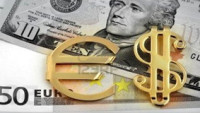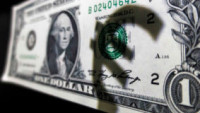 The steady recovery in global equity markets that we’ve seen since the start of the year appears to have hit a fairly big bump in the road, with US markets posting their worst week this year on a combination of concerns that the macroeconomic backdrop is much weaker than was thought to be the case, and that whatever the outcome of a US, China trade deal, it won’t be enough to mitigate a broader economic slowdown. Last week’s OECD GDP downgrades, as a well as a sharp reassessment of the economic prospects for European growth by the European Central Bank, also sharpened investor concerns about stock market valuations.
The steady recovery in global equity markets that we’ve seen since the start of the year appears to have hit a fairly big bump in the road, with US markets posting their worst week this year on a combination of concerns that the macroeconomic backdrop is much weaker than was thought to be the case, and that whatever the outcome of a US, China trade deal, it won’t be enough to mitigate a broader economic slowdown. Last week’s OECD GDP downgrades, as a well as a sharp reassessment of the economic prospects for European growth by the European Central Bank, also sharpened investor concerns about stock market valuations.
Asia markets have managed to rebound modestly at the start of the new week, and this should see markets here in Europe open higher this morning, however after several weeks of gains, last week’s losses have sown a few doubts, about the longer term economic outlook.
Last Friday’s US February payrolls report, also offered food for thought for markets, disappointing on the headline number, with only 20k new jobs added. Despite this the idea that it was bad report is a little wide of the mark, given that wages growth posted a new 10 year high of 3.4%, while the unemployment rate dropped to 3.8% and the U6 unemployment rate also fell sharply as well.
This would suggest that the US labour market is starting to tighten up, as the labour market heads closer to full employment which in turn could well exert further upward pressure on the US dollar, though this could face a further test today with the latest January retail sales numbers. The US consumer is a key driver of the US economy and in recent months, despite strong jobs and wages growth, we have seen signs consumer spending and confidence appears to be slowing.
This view doesn’t really square with recent strong earnings reports from the likes of Amazon, Walmart and Target, nonetheless retail sales in December dropped sharply by 1.2%, the worst decline in a decade, a number which Trump’s chief economic advisor Larry Kudlow called a “glitch”. If the number really was a “glitch” then we can expect to see a rebound in today’s January number, as well as possible revisions, given that both months numbers have been delayed by the US government shutdown. Expectations are fairly low with no change expected.
It’s all set up to be a big week for sterling with little indication that Theresa May’s Brexit deal will get anywhere close to getting through Parliament this week, with the pound slipping back in Asia trading this morning, as it becomes clear that there hasn’t been any progress on changing the withdrawal agreement, with neither the EU or UK government being willing to modify their current position.
With a “no deal” scenario still the current default position MPs will find themselves under increasing pressure to try and prevent such an outcome, however for all the hot air about “taking no deal off the table”, or warnings that Brexit might not happen, the fact is in the absence of any new legislation the UK will leave without a deal on 29th March.
The only way that can change is if MPs actually do something, like agreeing to pass legislation to make sure that a “no deal” Brexit doesn’t happen. That would mean taking steps to change what is currently on the statue book. Given the current divisions in Parliament this still remains a high bar, and something that currency markets only now appear to be waking up to.
In a sign that the Bank of England is getting a little nervous ahead of this month’s deadline, the central bank has ordered some UK lenders to triple the amount of easy to sell assets in the event of a liquidity crunch in the run up to the 29th March.
Shares in Deutsche Bank and Commerzbank are likely to be in focus this morning after new reports at the weekend that senior management at Deutsche had agreed to preliminary talks looking at the feasibility of a merger.
Last week’s decision by the European Central Bank to downgrade its growth and inflation forecasts could well have been the catalyst for this, given it is bad news for both banks, pushing as it does the likelihood of any upward move on interest rates further out into the future, with little likelihood that rates will go up in this decade at least.
The reality is neither bank is particularly profitable and with rates firmly in negative territory and margins already wafer thin, it’s hard to see the rationale for any type of merger. All it does is serve to make two rather large problems into one enormously big one.
EURUSD – the euro has continued to decline pushing below its lows last year and testing the 1.1180 area which is 61.8% retracement of the entire 1.0340/1.2545 up move. This is likely to be a key support in the short term, with a break below targeting the 1.1000 area. We have resistance at 1.1270, as well as the 1.1400 area.
GBPUSD – a bearish weekly reversal could well see move towards 1.2980 trend line support from the lows this year at 1.2430. A break below 1.2980 and the 200-day MA could well see further losses towards 1.2770, and the 1.2500 area. We need to see a recovery back above the 1.3080 level to stabilise.
EURGBP – the recent break below the 0.8620/30 area has proved to be somewhat short lived and the recovery back above the 0.8650 level has the potential to return us towards the 0.8720 area. Only a move back below the 0.8620/30 area reopens a move back towards the lows at 0.8540. the potential to open up further losses towards the 0.8450 area.
USDJPY – having failed to consolidate a move above 112.00 last week the US dollar has fallen back below the 200-day MA at 111.30, potentially opening up a return to the 110.70 area. A fall below here argues for a return to the 110.20 level.
____________












